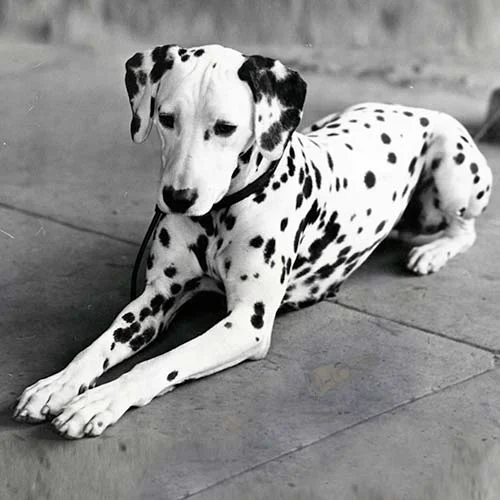Dalmatians are one of the most recognizable dog breeds, known for their striking black or liver-spotted coats against a white background. Their unique appearance and rich history have made them a beloved breed among dog enthusiasts. This article explores ten fascinating facts about Dalmatians, providing insights into their characteristics, history, and care.

Unique Coat Pattern
The Dalmatian’s coat is one of its most defining features. Puppies are born completely white and develop their iconic spots over the first few months of life. By the time they are three to four months old, most Dalmatians will have developed the majority of their spots, although new ones can continue to appear throughout their lives. The genetic basis for their coat pattern is complex, involving multiple genes that influence the development and distribution of spots, making each Dalmatian’s coat unique.
Historical Background
Dalmatians have a rich and somewhat mysterious history. Their origins are not definitively known, but they are believed to have roots in the region of Dalmatia, Croatia. Historically, Dalmatians served various roles, including as carriage dogs, where they would run alongside horse-drawn carriages to protect the occupants. They also became popular as firehouse mascots, symbolizing bravery and loyalty. The breed has been depicted in art and literature for centuries, showcasing their historical significance.

Distinctive Health Characteristics
While generally healthy, Dalmatians are prone to specific health issues, notably deafness. Approximately 15-30% of Dalmatians may experience some degree of hearing loss, which can affect their training and daily life. Regular veterinary check-ups and early socialization are crucial for maintaining their health. Owners should also be aware of the breed’s unique sensitivity to certain medications, particularly those affecting liver function, which can lead to complications if not managed properly.
Exceptional Exercise Needs
Dalmatians are high-energy dogs that require significant exercise to stay healthy and happy. They typically need at least two hours of vigorous activity each day, which can include walks, runs, and playtime. Engaging in various physical activities not only helps meet their exercise requirements but also keeps their minds stimulated, reducing the likelihood of behavioral issues stemming from boredom.

Unique Temperament Traits
Dalmatians are known for their playful and energetic temperament. They are intelligent, loyal, and thrive on social interaction with their families. Early socialization and consistent training are essential to harness their energy and ensure they develop into well-behaved companions. Their strong personalities can sometimes lead to challenges in training, but with patience and positive reinforcement, they can be taught to follow commands effectively.
Notable Dalmatian in Pop Culture
The breed gained immense popularity through Disney’s animated film “101 Dalmatians,” which introduced many to the charm of these spotted dogs. The film not only showcased their playful nature but also contributed to a surge in interest in Dalmatian ownership. This cultural representation has had lasting effects on perceptions of the breed, often emphasizing their appeal as family pets.

Training Challenges and Tips
Training a Dalmatian can present unique challenges due to their independent and sometimes stubborn nature. Common issues include their high energy levels and tendency to become easily distracted. Effective training methods include establishing a consistent routine, using positive reinforcement, and incorporating mental stimulation into training sessions. Patience and persistence are key, as Dalmatians respond best to a structured yet flexible training approach.
Their Role in Firehouses
Historically, Dalmatians served as firehouse mascots, a tradition that continues in some fire departments today. They were known for their ability to run alongside horse-drawn fire carriages, helping to clear the way for firefighters. This unique role has cemented their status as symbols of courage and loyalty, and many firehouses still keep Dalmatians as part of their tradition, celebrating their historical significance.

Dalmatians and Their Spot Patterns
Each Dalmatian has a unique pattern of spots, much like human fingerprints. This individuality adds to their charm and appeal. The science behind their spots is fascinating, as they are determined by genetic factors that influence how and where the spots develop on their coats. Understanding this aspect of their biology can enhance appreciation for the breed’s uniqueness.
The Dalmatian’s Lifespan and Aging
Dalmatians typically have a lifespan of around 10 to 13 years. As they age, they may face common issues such as joint problems and decreased mobility. To ensure a good quality of life in their senior years, it is essential to provide a balanced diet, regular exercise, and routine veterinary care. Keeping their weight in check and engaging them in appropriate physical activities can help mitigate some aging-related health issues.
Conclusion
Dalmatians are a breed rich in history and character, making them fascinating companions. Their unique traits, from their iconic coat patterns to their energetic personalities, contribute to their enduring popularity. For those considering adding a Dalmatian to their family, understanding these facts can help ensure a rewarding and fulfilling relationship with this remarkable breed. Readers are encouraged to share their own experiences and insights about Dalmatians, contributing to the collective appreciation of this beloved breed.

